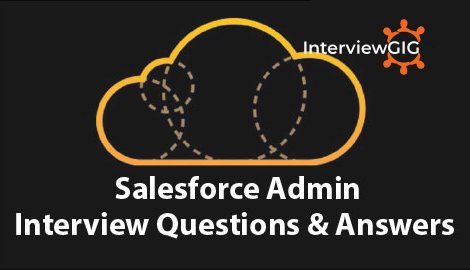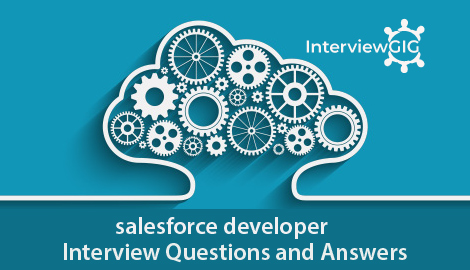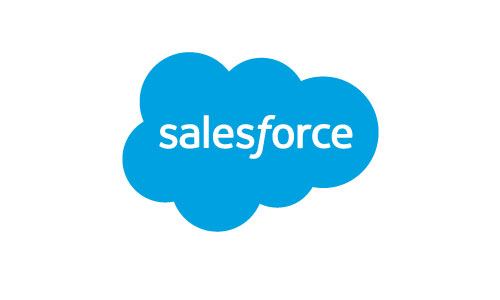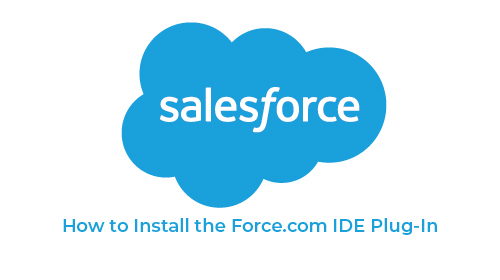Salesforce Developer Interview Questions
Preparing for a Salesforce interview can be daunting, especially with the variety of topics involved, ranging from Salesforce administration to advanced development techniques. Whether you’re a fresher or an experienced professional, understanding key concepts and real-time scenarios is crucial for success. This guide covers essential Salesforce interview questions and answers designed to help you confidently tackle interviews, demonstrate your skills, and stand out as a candidate.
What is Salesforce? Explain its key features?
Answer:
Salesforce is a cloud-based Customer Relationship Management (CRM) platform that helps businesses manage customer data, sales, marketing, and support processes. It provides a wide range of solutions for sales, service, marketing, and analytics.
Key Features:
- Sales Cloud: Manage sales processes, leads, and customer information.
- Service Cloud: Handle customer support and case management.
- Marketing Cloud: Automate marketing campaigns and track customer engagement.
- Customization: Build custom apps and workflows using low-code tools.
- AppExchange: Access to thousands of third-party apps.
- Analytics: Generate reports and dashboards for real-time insights.
- Integration: Supports integration with third-party apps and services via APIs.
What is Apex, and how does it differ from other programming languages like Java?
Answer: Apex is a proprietary, strongly-typed programming language developed by Salesforce, designed specifically for executing transaction control and business logic on the Salesforce platform. It is similar to Java but tailored for Salesforce’s multi-tenant environment.
Key Differences from Java:
- Governor Limits: Apex operates under Salesforce’s limits to ensure fair resource allocation (e.g., API call limits, database operation limits).
- Built-in Salesforce Integration: Apex is tightly integrated with Salesforce objects and allows direct interaction with Salesforce’s data model (e.g., SOQL for querying data).
- Execution Context: Apex is executed within the Salesforce cloud and follows a shared infrastructure model.
Where Can You Use Apex?
Answer:
- Triggers: Automatically execute logic when records are inserted, updated, or deleted.
- Controllers: Create custom logic for Visualforce pages and Lightning components.
- Batch Processing: Handle large-scale data operations efficiently.
- Web Services: Expose Apex classes as REST or SOAP APIs for external integration.
What is a Visualforce page?
Answer: A Visualforce page is a framework that allows developers to create custom user interfaces in Salesforce using HTML, CSS, JavaScript, and Salesforce’s own markup language. It enables the creation of pages that are tailored to specific business needs and can interact with data and logic from Salesforce. Visualforce also integrates easily with Apex controllers to handle back-end logic.
What is a Salesforce Object? Explain standard and custom objects.
Answer: A Salesforce Object is a database table that stores data in Salesforce. Each object contains fields that define what type of data it stores.
Types of Objects:
- Standard Objects: Pre-defined objects provided by Salesforce, such as Account, Contact, Lead, and Opportunity, used for core CRM functionality.
- Custom Objects: Objects created by users to store data unique to their business, with custom fields and relationships. Custom objects allow businesses to tailor Salesforce to their specific processes.
What is an App in Salesforce, and how is it created?
Answer: An app in Salesforce is a collection of tabs, objects, and functions that work together to perform a specific business task. It provides users with a streamlined interface to manage data and perform actions within Salesforce.
How to Create an App:
- Navigate to Setup and select App Manager.
- Click on New Lightning App (or Classic App, depending on your preference).
- Provide a name, description, and select a logo.
- Add relevant objects, tabs, and utilities.
- Configure user permissions and profiles for app access.
- Save and assign the app to the required users.
What is a trigger and how does it work?
Answer: A trigger in Salesforce is an Apex script that executes automatically before or after specific database events, such as insert, update, delete, or undelete on Salesforce objects. Triggers allow developers to define custom logic that happens when these events occur.
How It Works:
- Before Trigger: Used to validate or modify data before it is committed to the database.
- After Trigger: Used to perform actions that require data already saved in the database, such as sending emails or creating related records.
In the order of execution for triggers, when do assignment rules and auto-response rules get executed?
Answer:
- Assignment Rules: After the execution of after triggers, but before workflow rules and escalation rules.
- Auto-Response Rules: They execute after assignment rules, specifically when a lead or case is created or updated.
Execution Order:
- Before triggers
- Validation rules
- After triggers
- Assignment rules
- Auto-response rules
- Workflow rules
What is a SOQL query? Write a basic SOQL query to retrieve all contacts.
Answer: SOQL (Salesforce Object Query Language) is a query language used to retrieve data from Salesforce objects. It’s similar to SQL but optimized for Salesforce’s multi-tenant database structure. SOQL is used to query records and can fetch data from both standard and custom objects.
Basic SOQL Query to Retrieve All Contacts:
SELECT Id, FirstName, LastName, Email FROM Contact
This query retrieves the Id, FirstName, LastName, and Email fields from the Contact object.
Explain the difference between SOQL and SOSL?
Answer:
SOQL (Salesforce Object Query Language):
-
- Used to query records from one object at a time (though relationships can be queried).
- Syntax similar to SQL.
- Retrieves specific fields from records based on a filtering condition.
- Works on standard and custom objects.
- Example: SELECT Name FROM Account WHERE Industry = ‘Technology’.
SOSL (Salesforce Object Search Language):
-
- Used for searching text across multiple objects at once.
- Returns results based on keywords, similar to a full-text search.
- Retrieves records based on fields indexed for search (such as Name, Email, Phone).
- Example: FIND ‘John’ IN ALL FIELDS RETURNING Contact(Name), Account(Name).
Can SOSL be used in triggers? If so, how?
Answer: Yes, SOSL can be used in triggers to search for text within records and perform actions based on the results. For example, you could use SOSL to search for a specific keyword in a contact’s email address and update a field accordingly.
What is a Test Class in Salesforce, and how do you ensure the minimum code coverage for deployment?
Answer: A Test Class in Salesforce is an Apex class written to test the functionality of your code and ensure that it behaves as expected. It verifies logic, prevents regression, and ensures data integrity.
Ensuring Minimum Code Coverage:
- Salesforce requires at least 75% code coverage for deployment to production.
- To ensure this, write test classes that cover both positive and negative scenarios, including edge cases.
- Use assertions (System.assert()) to validate the output and behavior.
What are the different types of DML statements in Apex, and when would you use them?
Answer: DML (Data Manipulation Language) statements in Apex are used to manipulate Salesforce records in the database.
INSERT: Adds new records to the database.
UPDATE: Modifies existing records.
DELETE: Removes records.
UPSERT: Updates existing records or inserts new ones if they don’t exist.
MERGE: Combines up to three records into one, keeping the most relevant data.
UNDELETE: Restores soft-deleted records.
When to use DML statements:
- INSERT: To create new records, such as when a user submits a form.
- UPDATE: To modify existing records, such as when a user edits their profile.
- DELETE: To remove records, such as when a customer is no longer active.
- UPSERT: To insert or update records based on a unique identifier, such as when importing data from a CSV file.
- MERGE: To combine records from two objects, such as when merging duplicate contacts.
Explain the key differences between LWC and LAF. When would you choose one over the other?
Answer:
- LWC (Lightning Web Components): A modern framework that uses standard web technologies (JavaScript, HTML, CSS). It is lightweight, faster, and promotes modular development.
- LAF (Lightning Aura Framework): The older component-based framework in Salesforce. It’s more feature-rich but heavier compared to LWC.
When to Choose:
- Use LWC for new development as it’s more efficient and aligned with web standards.
- Use LAF only if you need legacy features or have existing Aura components to maintain.
How do you handle bulkification in triggers?
Answer:
Bulkification ensures that triggers handle large sets of data efficiently without hitting governor limits. Instead of processing one record at a time, handle records in bulk.
Best Practices:
- Use collections (lists, sets, maps) to process multiple records in one go.
- Use SOQL for loops to avoid querying inside loops.
- Perform DML operations outside of loops to minimize the number of database calls.
What is a Workflow Rule, and how does it work?
Answer: A Workflow Rule is an automation tool in Salesforce that triggers actions such as field updates, email alerts, task creation, or outbound messages based on specified criteria.
How It Works:
- Define a condition or rule.
- When the condition is met, the workflow triggers one or more automated actions.
- Workflow rules operate after a record is saved but before any after triggers or other processes.
What is a Lookup Relationship and a Master-Detail Relationship in Salesforce?
Answer:
- Lookup Relationship: Links two objects in a loosely coupled manner, where one object can reference another, but there is no dependency between the records. The parent record can exist without the child record.
- Master-Detail Relationship: A tightly coupled relationship where the child record is dependent on the parent record. If the parent is deleted, the child record is also deleted (cascading delete), and the child inherits security settings from the parent.
If a user lacks access to a specific record type, will they still be able to view records associated with that record type?
Answer: No, if a user does not have access to a specific record type through their profile or permission set, they will not be able to create records of that type. However, viewing existing records of that type is based on object- and field-level security and sharing settings, so they may still be able to view them if other permissions are granted.
How do you ensure adequate test coverage in your Salesforce code, particularly when working with UI components like LWC and Visualforce?
Answer: To ensure adequate test coverage:
- For Apex code, write unit tests with assertions to validate both positive and negative scenarios, aiming for at least 75% code coverage.
- For LWC, use Jest to write unit tests for JavaScript logic and UI behavior.
- For Visualforce pages, test associated Apex controllers using test classes to cover the backend logic.
- Simulate user interactions to ensure component behavior is covered.
How do you create a Custom Field in Salesforce?
Answer:
- Navigate to Setup and go to Object Manager.
- Select the object where you want to add the custom field.
- Click on Fields & Relationships and then New.
- Choose the field type (e.g., text, number, picklist).
- Define the label, field name, and other attributes like length or options.
- Set field-level security and choose whether to add it to page layouts.
- Click Save to create the field.
How do you optimize Apex code to handle large data sets and avoid Governor Limits?
Answer: To optimize Apex code for large data sets and avoid Governor Limits, you can:
- Bulkify DML operations: Process records in bulk using the bulkify keyword and for each loops.
- Use SOQL for filtering and querying data: Use SOQL to filter and query data efficiently.
- Avoid unnecessary calculations and loops: Optimize your code to avoid unnecessary calculations and loops.
- Leverage batch Apex: Use batch Apex to process large data sets in manageable chunks.
- Consider using bulkified field updates: Use bulkified field updates to update multiple records efficiently.
Which access modifier allows a subclass to access its parent class’s variables?
Answer: The protected access modifier allows a subclass to access its parent class’s variables. This means that the variables are accessible within the same package and by subclasses, even if they are in different packages.
How do you implement batch Apex?
Answer: To implement batch Apex:
- Create a class that implements the Database.Batchable interface.
- Define three methods:
- start: Returns a Database.QueryLocator or an Iterable for records to process.
- execute: Processes each batch of records.
- finish: Executes post-processing, like sending notifications.
- Use the Database.executeBatch method to execute the batch class, specifying the scope size.
What is a scheduled job in Salesforce? How do you create one?
Answer: A scheduled job in Salesforce allows you to run Apex classes at specific times or intervals. This is useful for automating tasks like data cleanup or periodic updates.
How to Create One:
- Implement the Schedulable interface in an Apex class.
- Define the execute method to include the logic you want to run.
- Use the System.schedule method to schedule the job, providing a job name, CRON expression, and class instance.
How do you handle asynchronous processing in Salesforce?
Answer: Asynchronous processing in Salesforce can be handled using:
- Future Methods: Use @future annotation to run methods asynchronously.
- Batch Apex: Process large data sets in chunks.
- Queueable Apex: Similar to future methods but allows for job chaining and more complex operations.
- Scheduled Apex: Run jobs at specific times or intervals.
How do you implement data validation in Salesforce?
Answer: Data validation in Salesforce can be implemented using:
- Validation Rules: Create rules that ensure data meets certain criteria before it can be saved. Use formulas to define conditions and error messages.
- Required Fields: Set fields as required in the object’s field settings to enforce data entry.
- Apex Triggers: Implement logic in triggers to enforce complex validations that can’t be handled by validation rules.
How do you apply the Model-View-Controller (MVC) pattern when developing Salesforce solutions?
Answer:
The MVC pattern separates the application into three main components:
- Model: Represents the data and business logic.
- View: Represents the user interface.
- Controller: Handles the interaction between the model and the view.
In Salesforce, you can apply the MVC pattern by:
- Creating Apex classes to represent the model and controller.
- Using Visualforce pages or Lightning Web Components to represent the view.
- Using Apex controllers to handle user input, update the model, and render the view.
Explain the role of the Limits class in Salesforce and how it can help prevent Governor Limit errors.
Answer: The Limits class in Salesforce provides methods to check current governor limits during the execution of Apex code. It allows developers to monitor resource usage (such as CPU time, heap size, and number of SOQL queries) and avoid hitting limits.
How It Helps:
- By using methods like Limits.getDMLRows() or Limits.getQueries(), developers can implement logic to ensure they stay within governor limits, avoiding runtime exceptions.
- It enables proactive error handling, allowing developers to optimize their code before it reaches the limits.
What are Named Credentials, and how are they used to simplify integration in Salesforce?
Answer: Named Credentials in Salesforce provide a way to manage authentication for external services. They store the URL of an external service and the associated authentication details, making it easier to call external APIs securely.
Usage:
- Simplify the integration process by allowing developers to define authentication in one place without hardcoding sensitive credentials in Apex code.
- Use in conjunction with HTTP callouts in Apex, which can leverage the Named Credentials for authentication.
Explain how CPQ integrates with Salesforce and how you’ve leveraged it in previous projects.
Answer: CPQ (Configure, Price, Quote) integrates with Salesforce by providing tools to streamline the sales process, allowing sales teams to quickly configure products, determine pricing, and generate quotes.
Leverage in Projects:
- Implemented CPQ solutions to automate pricing calculations and discounting based on predefined rules.
- Utilized CPQ for generating quotes and proposals, reducing the manual effort and time needed for sales teams.
- Integrated CPQ with Salesforce to ensure real-time inventory management and order processing.
Describe your experience with integrating Salesforce with external systems using REST and SOAP APIs.
Answer: I have experience integrating Salesforce with external systems using REST and SOAP APIs. This involves:
- Creating API requests to retrieve or update data from the external system.
- Handling API responses and processing the data as needed.
- Implementing error handling to deal with potential issues during the integration process.
- Using tools like Postman to test and debug API calls.
You need to create a custom object to track customer complaints. How would you design the object and its fields?
Answer:
Object Name: Complaint
Fields:
- Complaint Number: Auto-number field to uniquely identify complaints.
- Customer: Lookup relationship to the Customer object.
- Product: Lookup relationship to the Product object.
- Category: Picklist field to categorize complaints (e.g., technical, billing, product quality).
- Status: Picklist field to track the status of the complaint (e.g., new, assigned, resolved).
- Description: Text area field for detailed complaint description.
- Created Date: Date field to record the creation date.
- Resolved Date: Date field to record the resolution date.
- Assigned To: Lookup relationship to the User object to assign complaints to specific users.
How would you fetch records that failed during a batch execution?
Answer: To fetch records that failed during a batch execution, you can implement the finish method of the batch Apex class. Inside this method, you can access the Database.BatchableContext and check for failed records using the Database.getQueryLocator or any custom logging mechanism you have in place.
You can also utilize the Database.executeBatch method’s return value, which includes the job’s status and any failed records. You can then query those records from the error logs or custom objects where you’ve recorded the failures.
A user reports they cannot access certain fields on a record. How would you troubleshoot and resolve this issue?
Answer: To troubleshoot and resolve field access issues:
- Check Field-Level Security: Ensure the user’s profile or permission set has access to the specific fields.
- Verify Record Ownership: Confirm that the user has access to the record based on sharing rules.
- Check Page Layouts: Ensure that the fields are included in the page layout assigned to the user’s profile.
- Review Validation Rules: Check if any validation rules might be preventing access based on specific conditions.
If adjustments are needed, modify the profile or permission set accordingly to grant access.
You need to create a workflow rule to automatically assign leads to a specific sales team based on their location. How would you do it?
Answer: To create a workflow rule for lead assignment based on location:
- Navigate to Setup: Go to Workflow Rules in Setup.
- Create a New Rule: Click on New Rule and select the Lead object.
- Define Rule Criteria: Set criteria based on the location field (e.g., Location__c equals ‘North Region’).
- Define Actions:
- Choose Field Update to update the Assigned To field with the specific sales team’s user or queue.
- Activate the Rule: Save and activate the workflow rule.
How would you create a custom report to show the total sales revenue by product category?
Answer:
- Go to Reports in Setup.
- Click New Report.
- Select Summarize as the report type.
- Choose Opportunity as the object.
- Add the following fields to the report:
- Product Category
- Amount
- Group the report by Product Category.
- Add a summary field to calculate the Sum of Amount.
You need to create a Visualforce page to display a list of contacts with a custom search functionality. How would you approach it?
Answer:
- Create a new Visualforce Page.
- Add a standardController attribute to the page to reference the Contact
- Create a standardList component to display a list of contacts.
- Add a search component to allow users to search for contacts.
- Use Apex to handle the search functionality and filter the list of contacts based on the search criteria.
You need to create a custom email template to send automated email notifications to customers. How would you do it?
Answer:
- Go to Setup and search for Email Templates.
- Click New Email Template.
- Select the Classic Email Template
- Give the template a name and description.
- Use merge fields to insert dynamic data from the Salesforce record into the email.
- Customize the email content as needed.
How would you handle error handling and exception management in Apex code?
Answer:
- Use try-catch blocks to handle exceptions that may occur in your Apex code.
- Log errors using Apex’s logging framework to help with troubleshooting.
- Provide informative error messages to users if an exception occurs.
- Handle specific exceptions using appropriate error handling techniques.
You need to create a custom object to track customer feedback. How would you design the object and its fields?
Answer:
To design a custom object for tracking customer feedback, I would create an object named “Customer Feedback” with the following fields:
- Feedback ID (Auto Number): A unique identifier for each feedback entry.
- Customer Name (Lookup to Contact): Links to the customer providing feedback.
- Feedback Type (Picklist): Categories of feedback (e.g., Complaint, Suggestion, Praise).
- Feedback Description (Long Text Area): Detailed feedback from the customer.
- Rating (Number): A numerical rating (e.g., 1-5) for the service or product.
- Status (Picklist): Current status of the feedback (e.g., New, In Review, Resolved).
- Created Date (Date/Time): Timestamp of when the feedback was submitted.
- Assigned To (Lookup to User): The user responsible for following up on the feedback.
- Resolution Notes (Long Text Area): Notes regarding the resolution or follow-up actions taken.
Why can’t objects be passed as arguments to a future method in Salesforce? Is it possible to call a future method from a batch class or another future method?
Answer: Objects cannot be passed as arguments to a future method because future methods require parameters to be of primitive types, collections of primitive types, or the type ID. This restriction is in place to ensure that the method can be executed asynchronously without the risk of losing complex state information.
It is possible to call a future method from a batch class or another future method. However, if you call a future method from a future method, it counts towards the limit of future calls in that transaction, which is usually set at 50. Therefore, it’s essential to manage these calls carefully to avoid hitting limits.
How would you create a workflow rule to automatically escalate cases to a manager if they remain unresolved for a certain period?
Answer: To create a workflow rule for escalating cases:
- Navigate to Setup: Go to Workflow Rules in Setup.
- Create New Rule: Click on “New Rule” and select the Case object.
- Define Rule Criteria: Set criteria based on the status of the case (e.g., Status equals “Open”) and the duration (using a formula such as NOW() – CreatedDate > 3 for cases unresolved for more than 3 days).
- Define Actions:
- Choose Field Update to change the Owner of the case to the manager.
- Optionally, add an email alert to notify the manager.
- Activate the Rule: Save and activate the workflow rule to start automatically escalating cases.
You need to create a Visualforce page to display a list of accounts with a custom search and filtering functionality. How would you approach it?
Answer:
Create a new Visualforce Page.
Add a standardController attribute to the page to reference the Account object.
Create a standardList component to display a list of accounts.
Add a search component to allow users to search for accounts.
Use Apex to handle the search functionality and filter the list of accounts based on the search criteria.
Add additional filtering options (e.g., account type, industry) using apex:selectList or apex:inputField components.
How would you handle data synchronization between Salesforce and an external system?
Answer:
To handle data synchronization between Salesforce and an external system:
Determine Synchronization Frequency: Decide if the sync will be real-time or scheduled.
Use APIs:
For real-time integration, utilize REST or SOAP APIs to push or pull data between Salesforce and the external system.
For scheduled sync, consider using Apex Batch Jobs or Scheduled Apex to perform periodic updates.
Named Credentials: Use Named Credentials to simplify authentication with external systems.
Error Handling and Logging: Implement error handling to manage failed sync attempts and log errors for further investigation.
Data Mapping and Transformation: Define how data fields in Salesforce map to fields in the external system and handle any required transformations.
You need to create a custom object to track customer support tickets. How would you design the object and its fields?
Answer:
To design a custom object for tracking customer support tickets, I would create an object named “Support Ticket” with the following fields:
- Ticket ID (Auto Number): A unique identifier for each support ticket.
- Customer Name (Lookup to Contact): Links to the customer raising the ticket.
- Issue Description (Long Text Area): Detailed description of the issue.
- Status (Picklist): Current status of the ticket (e.g., New, In Progress, Resolved, Closed).
- Priority (Picklist): Priority level (e.g., Low, Medium, High, Critical).
- Assigned To (Lookup to User): The support agent responsible for handling the ticket.
- Created Date (Date/Time): Timestamp of when the ticket was created.
- Resolution Notes (Long Text Area): Notes regarding the resolution or follow-up actions taken.
- Due Date (Date): The date by which the ticket should be resolved.





